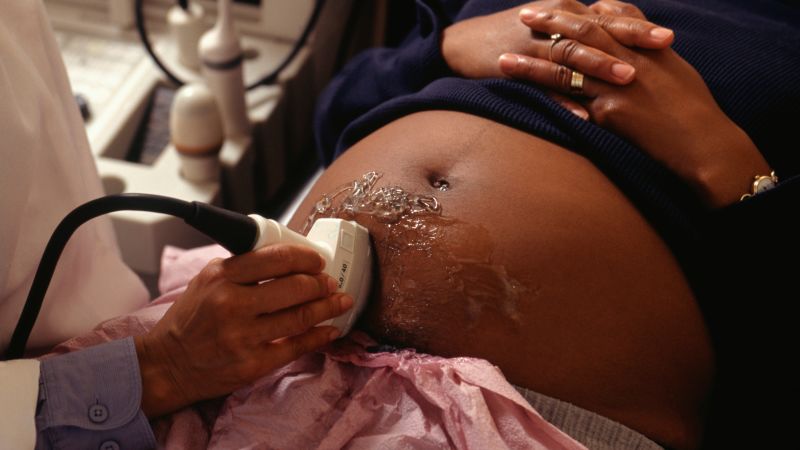1 in 5 women – and even more Black, Hispanic mothers – report mistreatment during maternity care, according to CDC report | CNN
1 in 5 women – and even more Black, Hispanic mothers – report ... CNN


About 1 in 5 Women Experience Mistreatment During Maternity Care, CDC Report Finds

Introduction
- According to a new report from the US Centers for Disease Control and Prevention (CDC), approximately 1 in 5 women experienced mistreatment while receiving maternity care.
- Nearly a third of women faced discrimination during their maternity care.
Disparities Among Different Ethnic Groups
- The negative experiences were more common among Black, Hispanic, and multiracial mothers.
- About 30% of Black and Hispanic mothers reported mistreatment during maternity care.
- About 40% of Black and Hispanic mothers reported discrimination.
Importance of Equitable and Respectful Care
Dr. Debra Houry, chief medical officer for the CDC, emphasized the need for equitable and respectful care for women during pregnancy and delivery. She stated that health systems, hospitals, and providers must take steps to improve care and reduce the risk of pregnancy-related complications and death for all women. The findings of this report highlight the urgent need for better support for mothers.
Survey Methodology and Limitations
The findings are based on a survey of over 2,400 women who have at least one child under the age of 18. The survey was conducted in late April, and women were asked to respond based on their experiences when delivering their youngest child, which was at least five years ago for most participants. It is important to note that the findings may not be nationally representative.
Types of Mistreatment Experienced
- Nearly 10% of women reported that healthcare providers ignored them, refused their requests for help, or took an unreasonable amount of time to respond to their requests.
- Nearly 7% of women said they were shouted at or scolded by doctors, midwives, or nurses.
- Nearly 4% of women were threatened by their healthcare providers.
- Other experiences of mistreatment included violations of physical privacy and withholding or forcing treatments.
Discrimination Based on Age, Weight, and Race
Approximately 1 in 10 women experienced discrimination due to their age or weight. Among Black mothers, 1 in 8 reported being discriminated against because of their race.
Impact of Racism and Sexism on Maternal Care
Nastassia Harris, a member of the Association of Women’s Health, Obstetric & Neonatal Nurses and founding executive director of the Perinatal Health Equity Initiative, highlighted the impact of racism and sexism on maternal care. She stated that the current healthcare system is broken for all women, but Black women bear the brunt of these inequities. The intersection of racism, sexism, and misogynoir affects how Black women are seen and perceived in the health space.
Maternal Mortality Crisis and the Role of Respectful Maternity Care
The maternal mortality crisis in the US has been worsening, with rates rising sharply in recent years. Black women are more than two times more likely than average to die from pregnancy or childbirth. Experts emphasize that respectful maternity care, including equitable treatment and effective communication, is crucial for improving treatment and reducing pregnancy-related deaths.
Barriers to Seeking Care and Reporting Concerns
Dr. Wanda Barfield, director of the CDC’s Division of Reproductive Health, highlighted the association between discrimination during prenatal care and reduced healthcare seeking behavior. Many women are reluctant to report their concerns, which can increase the risk of pregnancy-related complications for both mother and baby. The report also revealed that nearly half of all women did not ask questions or discuss concerns with their maternity care providers. This was often due to a lack of awareness that their experiences might not be normal, feelings of embarrassment, or fear of being perceived as difficult.
Avoidable Maternal Deaths
Another CDC report from last year found that more than 84% of women who died during pregnancy, delivery, or up to a year postpartum could have had avoidable deaths.
Call for Improved Care and Support
Nastassia Harris emphasized the need for a shift in the dynamics of maternal care. She stated that if women experienced what it looked like to be loved and holistically cared for, they would recognize the contrast with their previous mistreatment. Experts agree that reducing mistreatment and discrimination during maternal care requires investment across the broader healthcare system. Actions such as hiring and retaining a diverse workforce, providing healthcare provider trainings on unconscious bias and stigma, and supporting doulas and midwives as advocates for new mothers can help improve the quality of care.
Conclusion
The health of mothers reflects the health of the nation. Despite the mistreatment and discrimination, the majority of women reported being satisfied with the care they received during pregnancy and delivery. However, it is crucial to address these issues to ensure that all women receive equitable and respectful care.
SDGs, Targets, and Indicators
1. Which SDGs are addressed or connected to the issues highlighted in the article?
- SDG 3: Good Health and Well-being
- SDG 5: Gender Equality
- SDG 10: Reduced Inequalities
2. What specific targets under those SDGs can be identified based on the article’s content?
- SDG 3.1: By 2030, reduce the global maternal mortality ratio to less than 70 per 100,000 live births.
- SDG 3.8: Achieve universal health coverage, including financial risk protection, access to quality essential health-care services, and access to safe, effective, quality, and affordable essential medicines and vaccines for all.
- SDG 5.1: End all forms of discrimination against all women and girls everywhere.
- SDG 5.2: Eliminate all forms of violence against all women and girls in the public and private spheres, including trafficking and sexual and other types of exploitation.
- SDG 10.2: By 2030, empower and promote the social, economic, and political inclusion of all, irrespective of age, sex, disability, race, ethnicity, origin, religion, or economic or other status.
3. Are there any indicators mentioned or implied in the article that can be used to measure progress towards the identified targets?
- Indicator: Percentage of women mistreated while receiving maternity care.
- Indicator: Percentage of women facing discrimination during maternity care.
- Indicator: Percentage of Black and Hispanic mothers reporting mistreatment during maternity care.
- Indicator: Percentage of women experiencing disrespectful treatment from healthcare providers.
- Indicator: Percentage of women experiencing violations of physical privacy or forced treatments.
- Indicator: Percentage of women experiencing discrimination due to age, weight, or race.
SDGs, Targets, and Indicators
| SDGs | Targets | Indicators |
|---|---|---|
| SDG 3: Good Health and Well-being | SDG 3.1: By 2030, reduce the global maternal mortality ratio to less than 70 per 100,000 live births. | Indicator: Percentage of women mistreated while receiving maternity care. |
| SDG 5: Gender Equality | SDG 5.1: End all forms of discrimination against all women and girls everywhere. | Indicator: Percentage of women facing discrimination during maternity care. |
| SDG 5.2: Eliminate all forms of violence against all women and girls in the public and private spheres, including trafficking and sexual and other types of exploitation. | Indicator: Percentage of women experiencing disrespectful treatment from healthcare providers. | |
| SDG 10: Reduced Inequalities | SDG 10.2: By 2030, empower and promote the social, economic, and political inclusion of all, irrespective of age, sex, disability, race, ethnicity, origin, religion, or economic or other status. | Indicator: Percentage of Black and Hispanic mothers reporting mistreatment during maternity care. |
| SDG 3: Good Health and Well-being | SDG 3.8: Achieve universal health coverage, including financial risk protection, access to quality essential health-care services, and access to safe, effective, quality, and affordable essential medicines and vaccines for all. | Indicator: Percentage of women experiencing violations of physical privacy or forced treatments. |
| SDG 5: Gender Equality | Indicator: Percentage of women experiencing discrimination due to age, weight, or race. |
Behold! This splendid article springs forth from the wellspring of knowledge, shaped by a wondrous proprietary AI technology that delved into a vast ocean of data, illuminating the path towards the Sustainable Development Goals. Remember that all rights are reserved by SDG Investors LLC, empowering us to champion progress together.
Source: cnn.com

Join us, as fellow seekers of change, on a transformative journey at https://sdgtalks.ai/welcome, where you can become a member and actively contribute to shaping a brighter future.







